Your Brand Launch: Brand Strategy
How Subliminal And Hidden Design Messages Can Boost Brand Engagement
This article was first published via Mashable.
A handful of brands keep their loyal advocates excited and engaged by using hidden design language to tell the bigger stories in a highly visual, yet subliminal manner. And that is exactly why we are drawn to them: We seek to be “in-the-know.”
Secretive design language is widely used on web sites as “Easter eggs,” within products as hidden features, as hidden offerings by food providers (In’N’Out’s secret menu or Bible citations on the packaging, for example) and even on passports as security enhancements, like Norway’s next passport design.
Utilizing design secrets to share underlying themes is a powerful brand statement — one that helps gain buzz and keeps believers lining up for more.

Very much like the speakeasy that has no sign out front and is incredibly hard to find, we are attracted to brands that challenge us intellectually and hide elements from plain sight. Seeing and connecting them makes us feel special, and that is one wonderful feeling that a brand can trigger within their audience.
Here are two ways your brand can turn to the subliminal to get its audience engaged.
Opportunity 1: Let Your Brand Identity Speak Through Design
Brand identities, or simply ‘logos,’ are the most common place to find hidden messages and deeper meaning at the very top of the visual brand pyramid. The arrow between the letters ‘E’ and ‘x’ in the FedEx logotype is the go-to example for subliminal messaging in logotypes, but you can find them all around you.
As shown by Amazon’s “delivering a smile and products from A-Z” and Baskin-Robbins’ “31 flavors,” key messages are often hidden within a logo. Today’s clever tech startups that understand the power of brand story telling are right on their heels.
A brand’s identity needs to say many things, and graphic designers go beyond the obvious to achieve all, or at least most, of the objectives, having to pull out some visual tricks to fit them all in. Once the audience finds out about a hidden element in the brand identity, it feels more connected to the brand itself, as if it’s part of their secret.
We love sharing that secret with others. Today, we call that virality. Your logo alone can get people talking about the deeper meaning behind your brand.
Opportunity 2: Add Unexpected Layers to Your Brand Atmosphere
Your Brand Atmosphere is your visual foot print. It is what your audience sees when they get in touch with your brand image. It’s everything from your collateral and online presence to trade show booths and your email signature. Brand Atmosphere represents another opportunity to tap into the power of hidden design language.
When my brand consultancy was asked to create the visual image for Martian Ranch and Vineyard a few years ago, we were thrilled to learn that the name actually stemmed from the founding couple’s sons, Martin and Ian. Cleverly, they put the two words together to formulate a name for their next big offering, the winery Martian.
Given the name, the client’s directive from the get-go was to craft a Martian character to grace the wine labels and represent the Martian brand. My agency, however, did not love the thought of being greeted by a Martian, not with a $22-$35 bottle of biodynamic California wine and a brand that stands for much more than what the name implies.
Ensuring a happy ending, or a happy landing so to speak, we allowed the Martian to make its way into the brand’s design, but we restricted its appearances in a refined manner. When a consumer opens the bottle, for example, Martians are dancing around the cork, drinking in a festive manner.
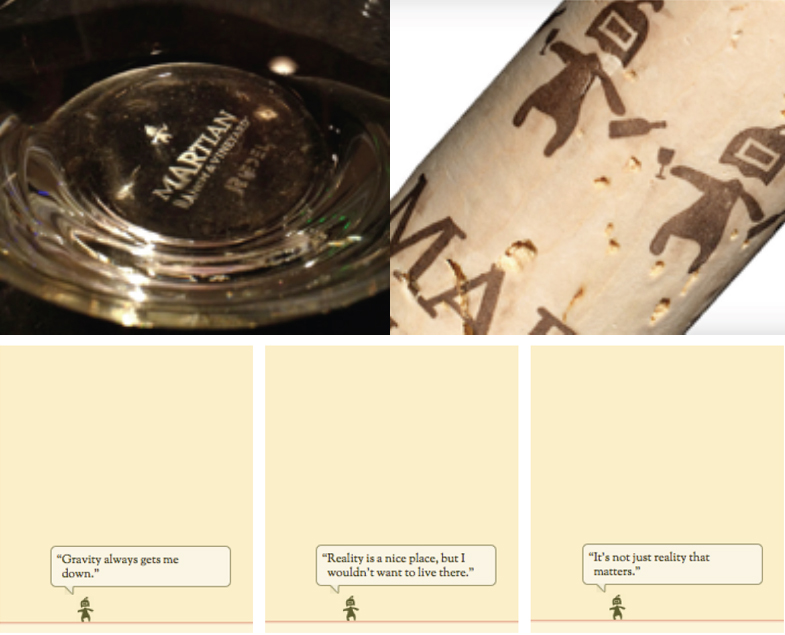
Then, when a site visitor goes to Martian’s landing page (no pun intended) for longer than 30 seconds, a tiny Martian character beams itself onto the site. It shares random thoughts like “Reality is a nice place, but I would not want to live there.” Needless to say, the Martian hunt was on and the buzz quickly spread, one glass at a time. All it took was one extra layer being subliminally added to the design language.
You need to dig deep into the core values of your brand. Is it humor, like Martian, or is it choice, like Baskin-Robbins? Incorporating hidden design language that speaks in unison with your brand values is useful and cost effective; you’re already going to pay to develop your brand’s identity and visual atmosphere.
Let the cleverness of your brand speak quietly, and you will hear the echo from your audience.
What You Can Learn From This Bar’s Brilliant Pricing Promotion
This article was originally published as part of my column in Inc. on July 7, 2015.
On July 7, The Way Station bar in Brooklyn offered its female patrons any drink for just 77 cents on the dollar. Here’s how it ended up hitting the jackpot.
Giving away free stuff, matching a sale to a donation, giving major discounts, celebrating certain tribes (psychographic or demographic)–all of these are age-old marketing and sales techniques that are often applied to certain days, products, or audiences. I’m sure this became crystal clear to all of us once again during the 4th of July holiday–any holiday is a good time to come up with that sales shtick or marketing idea to generate immediate sales and future leads.
Most sales tactics are usually lukewarm, overused, and, well, “sales-y.” They start to turn interesting when they feel not only generous but also authentic and empathetic. A tough mix to brew up, but one bar in Brooklyn, New York, has done just that this week. On July 7, The Way Station bar offered its female patrons any drink for just 77 cents on the dollar.
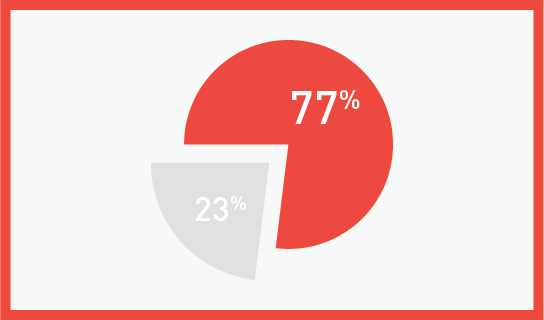
Bizarre, don’t you think? Here’s where the empathy and authenticity hits the jackpot: DNA Info New York notes that the business is “recognizing the difference between the average pay of women and men–77 cents on the dollar, according to the labor department–charging ladies only 77 percent of their bar tabs.”
Even though the idea itself stems from the Lean In D.C. chapter of Sheryl Sandberg’s Lean In movement, I thought it was a great promotional stint. Then it hit me: Is this a one-time marketing idea, or should it turn into a business model?
I spend a lot of time with entrepreneurs defining their brand positioning at the onset of their company foundation, and the lines between sales opportunity, marketing shtick, and authentic brand promise tend to blur quickly. And that is a mighty good thing.
Toms gets rightfully credited for creating the “one-for-one movement,” which acted as the foundation to a tremendously successful business model that has been adopted by countless others, from Warby Parker to Yoobi. It’s a new twist on an old sales tactic: buy one, get one free.
Entire companies are now based on what used to be “special promotions,” and they’ve made it their meaningful brand promise. The huge success of celebrity chef Danny Meyer’s Shake Shack can be attributed to his “enlightened hospitality” mantra, which is taken into action through the burger chain’s staff being overly generous to customers. Yes, you might get a free dessert because a waiter decided you deserved it.
Startups that successfully weave sales tactics into their brand’s positioning are becoming more and more prevalent by making truly meaningful experiences for customers. Looking at the one-day promotion by the Brooklyn bar made me wonder why the 77 percent discount should not turn into the next one-for-one model for other businesses.
Hopefully, one day the wage gap will close for good. If your startup is seriously concerned about gender pay inequality in 2015 and beyond, the markup lost in that missing 23 percent can be made up in many other ways. Attracting a passionate audience that will fully embrace and share your brand–that might be more difficult to accomplish.
Just my 23 cents on a topic that I hope will be taking branding, and the startup scene, by storm–and rightfully so.
Marking New Frontiers
What can make one even more nervous when about to speak to a room full of acclaimed rocket scientists and astronauts (yes, they actually did the round-trip we are all dreaming of)?
Right when I was walking on stage the organizer interrupted to quickly introduce Paul Tompkins to the select group of participants as he joined the Exploration Institute Summit at Caltech a few hours late. His excuse? He was kept busy launching one of (Elon Musk‘s famed) SpaceX rockets in the morning. Yep, we all have our excuses, don’t we? This one felt rather legit and it made my entrance that much less significant and that much more nerve-wrecking as I was about to talk to a group of geniuses on the importance branding plays in the planning stages of their next explorations – explorations they were busy planning over the course of this 2-day summit. To the outside world I was standing tall, on the inside I felt very, very small. Telling myself ‘they’re just people like you and me’ did not do the usual trick to calm my nerves in front of this group.
As so often is the case in midst of an adrenaline rush, it ends up being a whole lot of fun. And may that be one of the few things that I had in common with the group of geniuses in the room of the Keck Institute for Space Studies that sunny April afternoon in Pasadena: We all get extreme personal and professional satisfaction out of uncovering possibilities, planning launches and exploring new frontiers.
Here is a short snippet of that speech (forgive the sound, it may or may not have been aliens listening in), which I felt like sharing as it relates to a new mission to space just as much as it does to your launch of a new company, service or product. And what week would be better suited than the week of 4th of July where many of us in the U.S. are busy launching our own, more approachable, versions of rockets into the sky.
3, 2, 1, 0, all engines running:
(click here if you can not view above video)
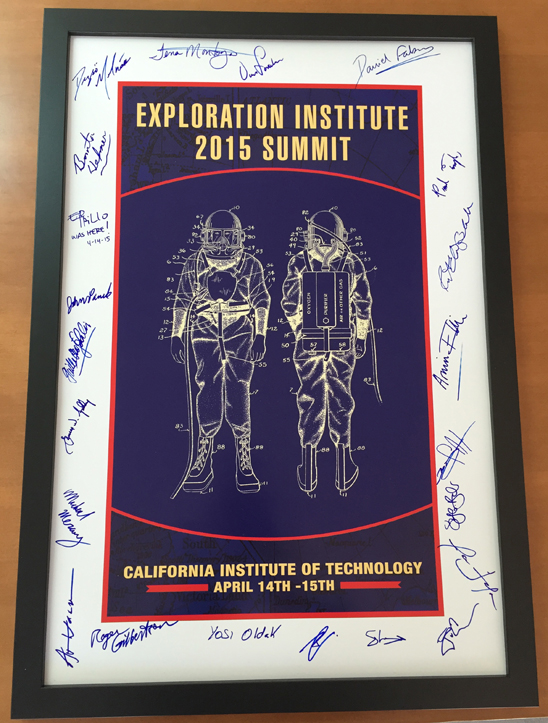
The ‘I am with genius’ trophy
How To Define Your Brand Personality
What is your brand personality? Hint: It’s not your personality. It’s not your team’s vibe. It’s not the look and feel of your product. It might not even be what you had in mind when starting your company.
It’s time to define what your brand’s personality actually is, and I am glad to share ‘the secret sauce’ with you.
A brand’s personality is derived from keywords that best describe your brand’s character as if your brand was a person. You think about how your brand wants to be perceived by your target audience – how it wants to make them feel. Who is your brand as a person? Is (s)he helpful, clever, feisty, glamorous? Below graphic from my bestselling book How to Launch a Brand describes this process and can help you get started on this simple, fun and extremely powerful early branding exercise, which is best done together with your team:
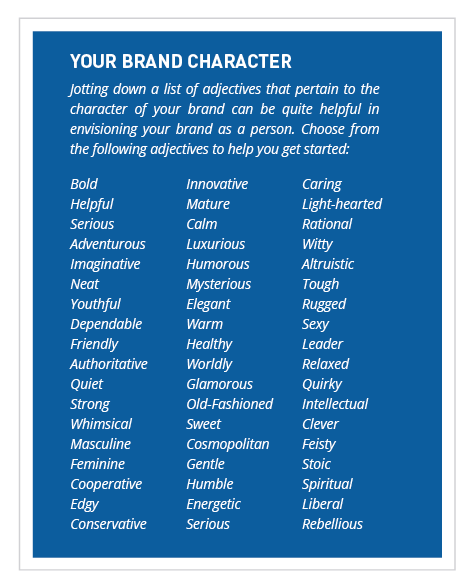
After compiling your list of keywords, associate each keyword with one or more brand personality archetypes. See the archetypes we like using, together with example keywords, below:
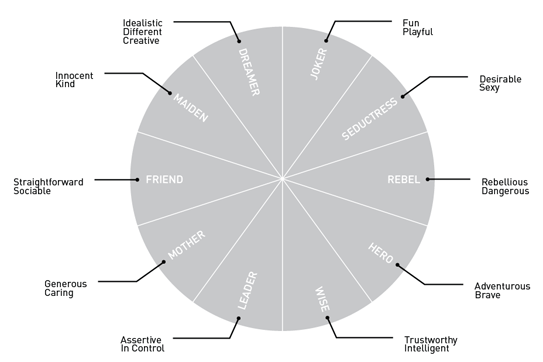
At the end of that exercise, you will see which three personality archetypes have the most keywords associated with them. Those are the personality traits your brand needs to fully represent from here on out in all of its visual and verbal communications. This simple yet very meaningful exercise should assist in defining the company name, the brand identity design as well as the brand atmosphere.
Looking at Target as an example most of us are familiar with, it quickly becomes obvious that we see Target first and foremost as a Friend, a Mother, and a Dreamer. What is your brand’s personality? Get your team together in a room, put your therapist hat on and find out!
Going through a brand transformation? Contact us to discuss how we can enable your relaunch.
Launch Glocally – Not A Choice, But A Necessity
It is a fact, we have all gone completely glocal!
To think about cultural diversity means inclusivity, not exclusivity. It speaks to today’s Zeitgeist. You think globally, but you act locally – it’s how we live our lives today and it’s how we launch brands today, which leads me to your very own brand launch.
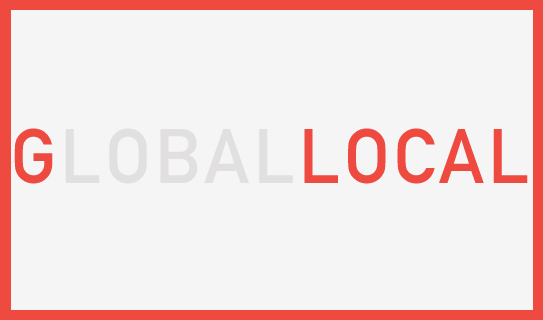
Your new brand will be exposed to a global audience from the get go even if you set out to create a very local or regional brand. Plan your brand launch around a very specific and narrow audience (you need that focus), but craft your brand name and design to have a unified global appeal in order to be embraced in other markets. Your positioning and core values should work globally, but a local strategy is where you touch communities.
Thinking global mitigates the risk of depending on one country or region’s economy for your success – you can easier move towards new markets if you think globally from the start. As a startup you don’t want to alienate future markets. Even if you intend to create a local-only brand, cultures within most regions are diverse, so by thinking global, you will ensure in a worst case not to offend, and in a best case to attract a larger, more diverse audience. Additional glocal incentive, if you needed it: Investors want to see global thinking and ambition and will likely make larger investments in your venture.
So how do you get there? Keep these 4 rules in mind as you develop your brand:
1. Craft and test
Carefully craft and test your brand name, brand identity design and brand voice to make sure it is globally accessible and acceptable
2. Position universally
Find universal values or truths that you can leverage with your brand positioning
3. Think 10 years
Think about how you want to have impacted mankind with your brand a decade from now. It will make you launch as a global brand, nearly guaranteed
4. Hire diversity
Employ staff with international experience and a global view, making you an authentic glocal venture from within
With these in mind, you should be in the right state to go completely glocal! You won’t regret it.
—
Marissa Hui, a key influencer of FINIEN’s naming and design strategies for our clients over the past years, is a contributor to this post. As Marissa is moving up North (onwards and upwards as they say), I want to take this opportunity to thank her for all her hard work, also on behalf of those readers who had a chance of working with her. Farewell Marissa!
CATEGORIES: Blog Your Brand Launch: Brand Strategy
5 Ways To Create A Timeless Brand
Creator, the beautiful online magazine of wework, the highly inspirational community of creators, published an original article by yours truly yesterday, so I thought sharing is caring. It goes something like this:
If I say “Coca-Cola,” you probably see the cursive typeface, red and white colors, curved bottles, and polar bears, right? That’s because Coca-Cola has spent decades building its brand with precise imagery, a consistent logo, and steadfast messaging.
While Coca-Cola is the quintessential timeless brand, many entrepreneurs have a tough time replicating its success because they’re drawn to the latest fads. Unfortunately, that’s not the key ingredient for enduring the test of time.
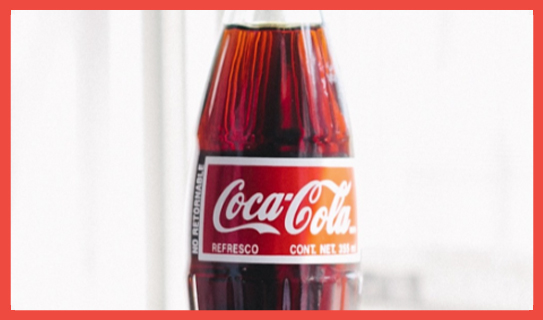
Photo credit: Lauren Kallen (Via Creator)
Styles change, but your company’s name and logo should not. You need to get it right from the beginning so you won’t confuse your target audience. It’s imperative that you create a brand that reflects your company’s values and is based on a shared passion with your target audience.
The brand that stays top of mind with consumers is the one that was built with “soul,” is driven by passion, and is marketed truthfully and consistently. A brand like Coca-Cola is truly timeless. Despite shifting marketing and advertising efforts, the brand is always surrounded by its unmistakable logotype and color scheme.
So how do you build a timeless brand? Here are five tips to get started:
- Buck the trends. If it’s in the moment, it’s unlikely to be in the future. Trends don’t hold up over time. People want something that stands out. A trend is cool for a very short time, then it quickly turns into an annoyance. The more honest and creative you are when crafting your brand identity, the more likely it is that you’ll create something timeless.
- Find a unique angle. If you try too hard to be like everyone else, you won’t be able to define your own unique brand identity. Look beyond your competitors, and dive deep into your own beliefs. Nail down what you’re about as a company, basing it on your core values, then determine how you want to communicate that to your target audience. Once you decide exactly what message you want to get across to your audience, you can create a truly unique visual and verbal brand language that’s lasting.
- Define your brand. A timeless brand has a shared passion with its audience. For example, Patagonia makes clothing for people who love climbing, skiing, and other outdoor sports that don’t require a motor. The brand caters to anyone who likes to connect with nature—hence it was able to expand from climbing gear to items for all other outdoor activities without losing its focus. This shared passion is directly reflected in the company’s sales because saving Mother Nature equals saving its audience’s playground.
- Be consistent. Your company name and logo are the first things that people will think about when your brand comes to mind, so keep them consistent. Make sure your logo is distinct, easy to adapt across different media types, and reflective of what your product or service actually delivers. (Hint: As you can learn from Zappos, it’s happiness, not shoes.)
- Avoid being too descriptive. When launching your brand, stay away from a name or logo design that’s too descriptive to avoid costly rebranding as your core focus shifts in the future. The uncertainty surrounding a rebranding effort could cost you time, money, and even loyal customers. At the very least, you’ll confuse them—as we recently saw with Airbnb’s rebrand PR nightmare.
When you solidify your brand from the start, you can focus on stabilizing it and investing in it. A brand that’s in unison with its identity remains relevant over time, and every party involved knows why the brand looks, walks, and talks a certain way. Base your brand on your unique offering, and connect with your audience meaningfully—you’ll be well on your way to developing a timeless brand.
Is Your Startup Turning Into The Meh Factory?
You start off with a grand vision, the big thought. You can imagine the person who will go crazy over your offering right in front of your eyes.
As you find yourself diving head-first into product development, in many cases your target audience starts to automatically widen and with that you run the risk of your startup turning into a factory of…meh.
A Meh Factory is pointing towards, and hitting the center of the bullseye perfectly. A good thing you’d assume, but the bullseye is smack in the middle of everything: not too this, not too that, it’s just right in the middle. A product that tries to appeal to everyone and do everything. It is not the cheapest, not the priciest, not the coolest, not the best – no, it’s just right there, sitting stagnant in the middle of it all and by hitting the target spot-on, it is missing its target audience, its initial reason for existence, entirely.
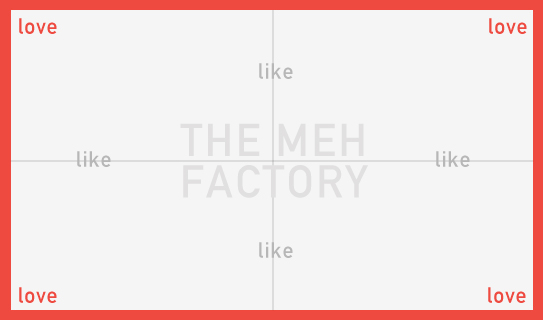
Becoming a Meh Factory is an even easier trap to fall into for an existing brand that is losing its soul, a great example being Gap (You can indulge in this story, exemplifying a brand’s quest to remain relevant).
As a startup you can protect yourself from falling into this gap (sorry!) early on. As you enter the development phase, remind yourself that as a new brand on the market it has to be your main goal to work towards reaching someone’s heart and not everyone’s mind. Only if you get one ‘tribe’ to not only like, but fully love your offering can you create a cult brand. And that is exactly what you should target. Shoot into any corner, just don’t point towards the center as you’d be missing your target – you know, the person you were thinking of when your idea first popped into your head. Make her love your brand, others will follow.
Your Brand’s Core Values: From Document To Embodiment
Deriving your venture’s core values early on is essential to formulating a strong brand from within.
Imagine your core values being displayed beautifully in your company’s lobby: Your team will see them every day and it should engage and inspire them. At the same time, clients and shareholders should be able to read, and be in agreement with, your core values actually representing, and serving, your brand well. They need to resonate across the board. We advise to keep those value-statements to three very short and actionable sentences (some of the more universally applicable examples we derived with our clients in the past months are shown below):
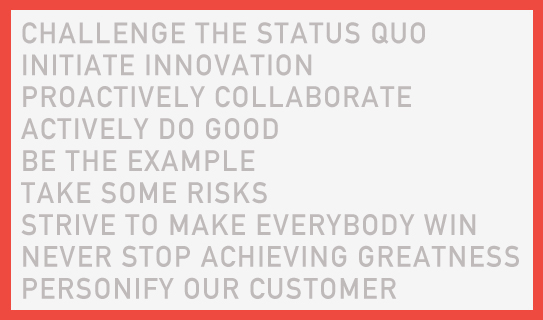
It is easy to notice that core values often sound similar, perhaps even a bit generic if taken out of context, regardless of how hard we worked with our clients on crafting them. They often do not feel naturally implementable either. No surprise then that they often stay put on a desktop in a PDF document, rather than being embodied by the team.
I gave this issue a lot of thought as I urge my team and myself to create work that is intrinsically being embodied by our clients to push their ventures into great brands.
I recommend embodying your core values the same way I would recommend you preparing for a very important presentation: Once you have the presentation deck done, the speaker notes inserted, and you start practicing, you will realize that the more you practice, the more you embody the content and overall spirit. The day of the presentation you will notice that you fully embody the content, to the extent that you could hold a successful speech even if a major electricity outage hit – in candle light, without slides, without speaker notes – because you are living the content.
Treat your core values the same way: Try assigning one of your new brand’s three core values to each day of the work week, then make it your goal to do something each day that turns the words of one core value into action. It might be a project scope document and you decide to question the status quo and try to turn it into a better product. It might be actively doing good and being the example by staying late to help a co-worker meet her deadline.
Examples are endless, core values there are only a few, so if you start checking one value off the list day after day over the course of two weeks, and you ask your team to be doing the same, you will quickly realize that you do not have to be reminded about the values anymore – you will just be doing it. This will be the magic moment where you will be embodying your brand’s core values, and that brand document that resides on your desktop can now be accidentally erased, because it does not matter anymore. Action, as we all know, speaks louder than words.
Do You Embody Or Represent Your Brand?
You can establish/own/run your brand; you can represent your brand; or you can literally be and fully embody your brand.
If you create a brand that is solely based on yourself (obvious examples include a fashion brand, thought leadership brand, Etc), know that if you ever have the desire or need to re-brand and/or re-position, you will face many challenges. Sounds logical after the fact, but as you go down that path of associating your name with the brand, it is easy to let the ego, or the simplicity of finding the domain name, run the branding process and push you into the limelight for good (may that actually be for better or worse!).
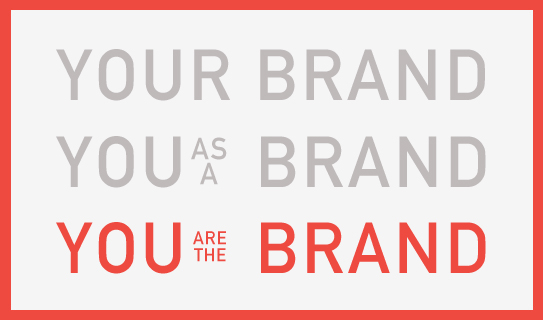
The issue of personal brand re-positioning will gain public attention during the US presidential election next year as we will be faced with two very different (and different types of) personal leadership legacy brands. Who is Hillary Clinton 2016 is what I pondered in The Washington Post (read this past Sunday’s cover story here) as we are collectively trying to re-define what her brand stands for today. Is the latest Bush brand in fact what the general public would assume it being based solely on his brand inheritance? I am not in politics (and smart enough not to discuss politics as part of my professional blog), but this comparison is the easiest way for you to watch the strategy, drama, and difficulty of personal brand re-positioning unfold on the big stage.
If you decide to be your brand, like a Martha Stewart did so famously before you, the coming months might make you re-consider and opt to solely represent your brand instead.
“Have You Eaten With Us Before? We Do Things A Little Differently Here.”
Really? Tapas-style? You don’t say!
Carrie Brownstein (of Sleater Kinney and Portlandia fame) responded to this all-too-common restaurant dilemma in a recent Rolling Stone article, “I always want to tell them, ‘I’ve eaten at a restaurant before. Unless I have to order in Esperanto, I think I’ll be able to get the hang of it…'”
Just like with restaurants hopping on the bandwagon a little late looking like fools, your venture will easily fall into the same trap, may it be through ‘our gamification aspect’, ‘our delightful experience’, the ‘unique social component’ etc. It’s still tapas to the rest of us, because we do not see how your product will make us feel differently.
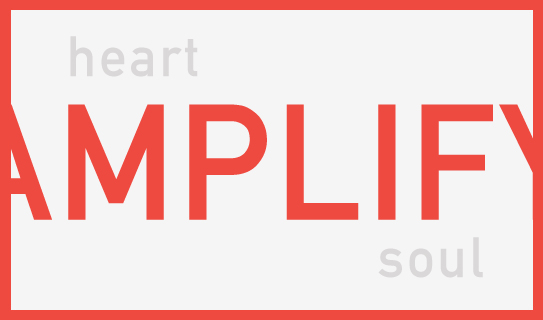
Ask yourself if you have found your true differently yet. To give you a head start, write a brand memorial speech. Once complete, it should make you feel the same way Carrie Brownstein felt when she heard the punk-rock style riot grrrl for the first time: ‘This is the sound my heart would make if I could amplify it.”
Listen to the heart of your startup, then amplify it so we can all hear it, and believe in it! And next time your waiter starts his differently speech, read him this post aloud.



